These are the best, most popular Greek sweets and desserts. Some of them are Greek traditional recipes with honey and nuts (many of them having routs in ancient Greece) while others are more modern (like sokolatopita, the famous Greek chocolate cake). All of them are delicious!

Jump to:
- 1. Melomakarona
- 2. Galaktoboureko
- 3. Kourabiedes
- 4. Bougatsa
- 5. Greek Baklava
- 6. Tsoureki
- 7. Rizogalo
- 8. Loukoumades
- 9. Diples
- 10. Trigona Panoramatos
- 11. Coffee Ice Cream Frappe (Frappuccino)
- 12. Koulourakia
- 13. Ekmek
- 14. Olive Oil Cake
- 15. Halva (Greek Semolina Pudding)
- 16. Greek Yogurt with Honey
- 17. Vasilopita
- 18. Fanouropita
- 19. Kataifi
- 20. Tiganites
- 21. Galatopita (Milk Pie)
- 22. Milopita (Greek Apple Pie)
- 23. Portokalopita (Orange Cake)
- 24. Karidopita (Greek Walnut Cake)
- 25. Revani
- 26. Moustokouloura
- 27. Koliva
- 28. Pasteli (Honey-Sesame Bars)
- 29. Loukoumi Filled Cookies
- 30. Sokolatopita
1. Melomakarona

Melomakarona is the most popular traditional Greek dessert (with Galaktoboureko coming second). These Greek honey spiced cookies which get soaked in honey syrup are usually made during Christmas and everyone loves them.
Traditionally, they're sprinkled with chopped walnuts but many modern recipes dip them in chocolate because it pairs exceptionally well with their flavor.
Their name comes from the ancient Greek word makaria (μακαρία) which was a type of bread that was baked in the memory of the deceased.
Melomakarona are at the 40th place of the Taste Atlas list regarding the best desserts in the world. Galaktoboureko is just a few places down.
2. Galaktoboureko

Another Greek favorite food with hardcore fans all over Greece is Galaktoboureko.
Its name comes from the word "gala" which means milk and "boureki" which means pie. So, as the name suggests, it is a type of pie consisting of custard cream filling (made with milk) wrapped in phyllo dough.
The filling is usually flavored with lemon or orange peel, cinnamon, and more recently, vanilla. After it's baked, Galaktoboureko gets drizzled with a thick sugar syrup something that makes it even more droolworthy!
3. Kourabiedes

These traditional Greek butter cookies with almonds are made for Christmas and weddings because of their white coating of icing sugar. They're also known as Greek Christmas shortbread cookies.
All of Greece is divided in team "kourabiedes" and team "melomakarona" during Christmas, with both teams having lots of loyal fans!
The secret for the best Kourabiedes is the good quality butter and the thorough whipping with the icing sugar.
If you haven't tasted them, this is a recipe you should definitely make!
4. Bougatsa

Bougatsa is another favorite Greek dish, especially loved in northern Greece. It is often eaten for breakfast, after partying all night.
Bougatsa can be sweet or savory, and the sweet type is made with filo dough and semolina custard. It's always served with icing sugar and ground cinnamon on top.
The traditional Bougatsa recipe is not the easiest thing in the world to make, but there is another easier version (the lazy womans Bougatsa as it's called in Greece) which is equally delicious, if not more!
This easy Bougatsa is made with filo pastry, sweetened condensed milk, whole milk, butter and eggs and literally anyone can make it. I strongly urge you to make it for your next Sunday breakfast!
For the traditional bougatsa you can check this Greek Bougatsa recipe by herbsandflour.com.
5. Greek Baklava
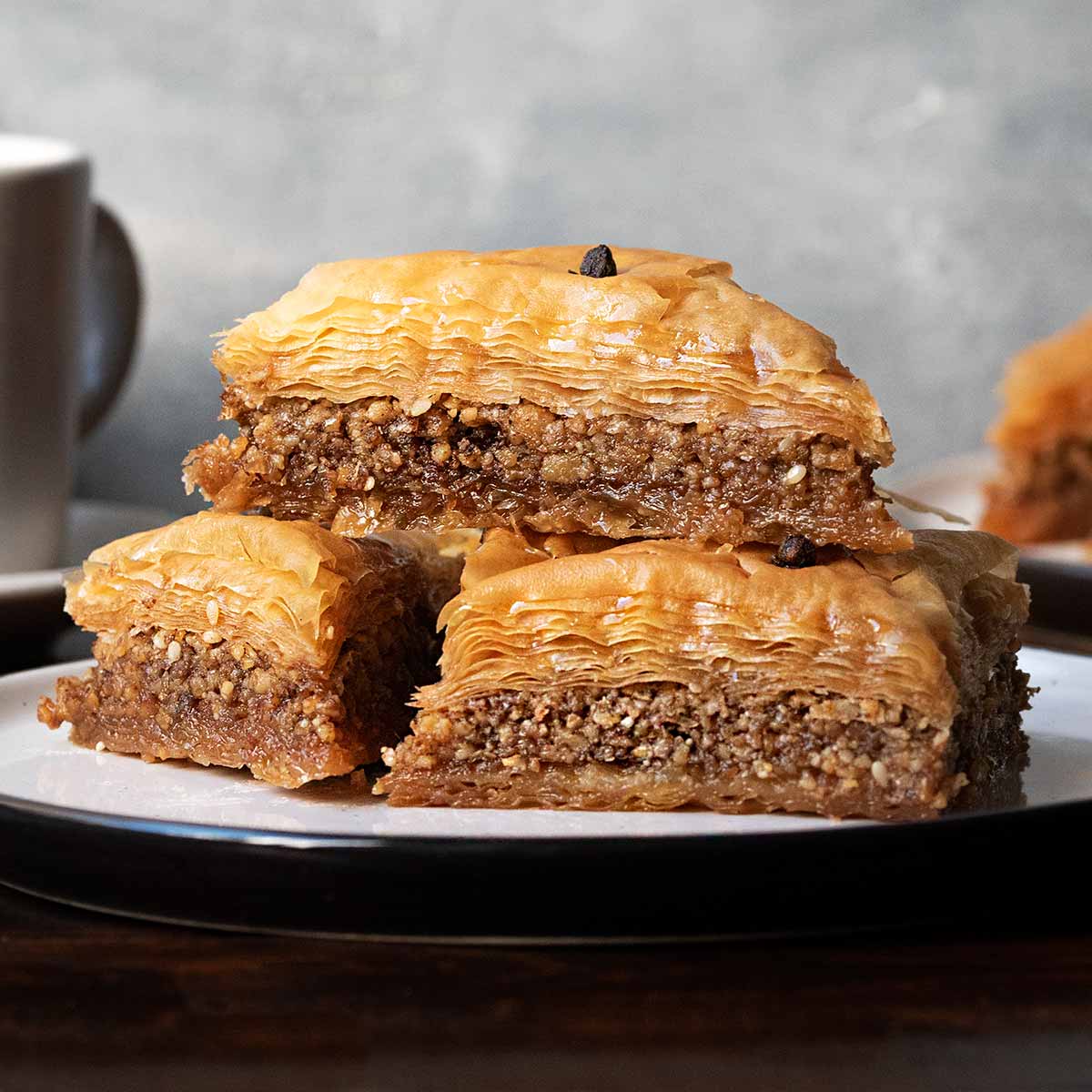
Baklava is an iconic dessert with buttered layers of crunchy phyllo pastry, a filling made with ground nuts and some honey syrup to bind everything together.
Contrary to the Turkish baklava which is made with pistachios, the Greek one is made with walnuts.
Tip: If you want to make it vegan, use olive oil instead of butter and maple syrup instead of honey.
And please, never use puff pastry instead of phyllo for a Baklava recipe!
6. Tsoureki
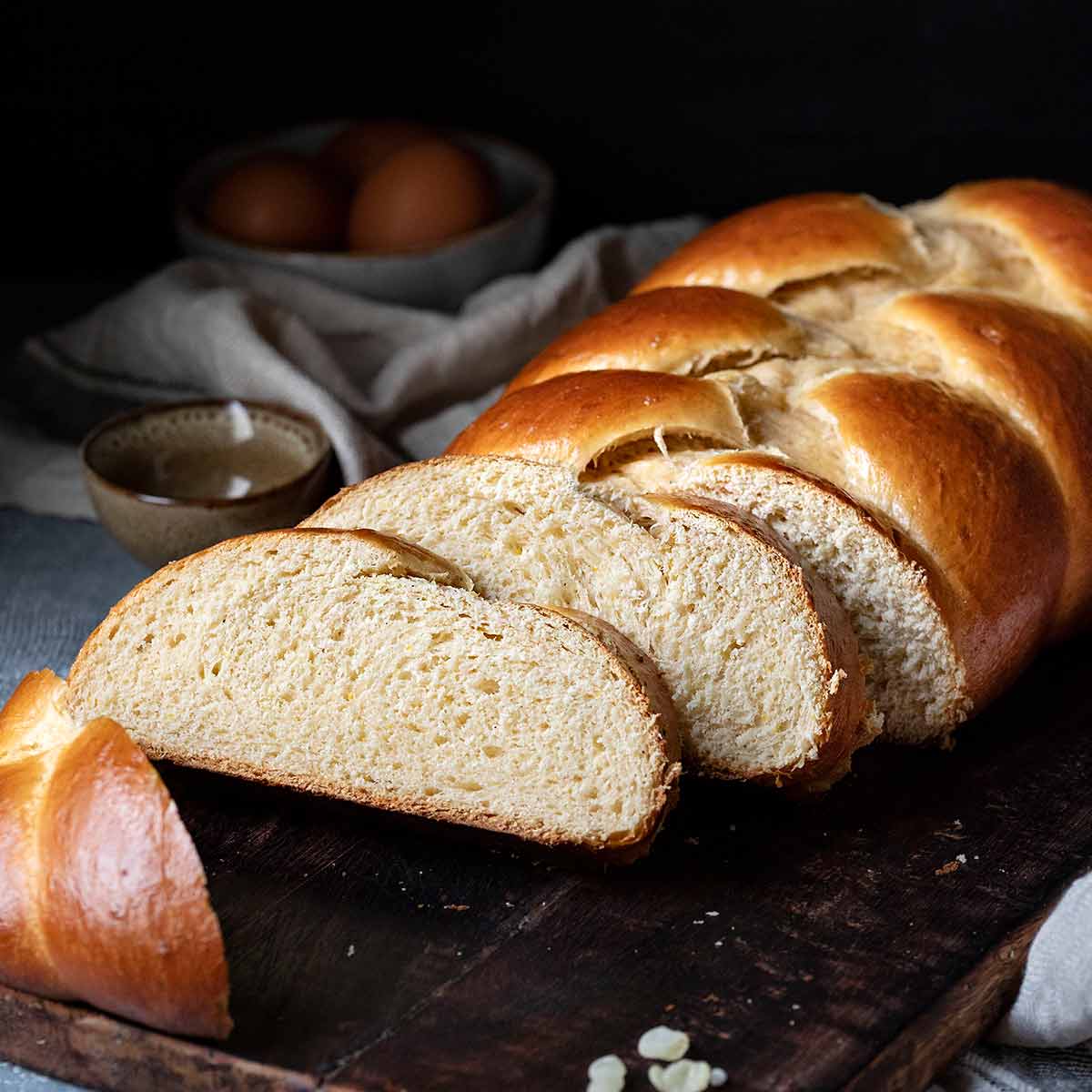
Tsoureki is the most popular Greek Easter dessert. It is a type of sweet enriched bread, similar to brioche. The difference is the texture which should be soft and stringy and the flavor which comes from ground mahlepi (or mahlab), a spice made from the seeds of sour cherry tree.
Two are the most important tips when making Tsoureki:
- You have to knead the dough for a very long time (to develop the gluten for that stringy texture) so a stand mixer is almost a must.
- Use bread flour with high protein content (adding a teaspoon of wheat gluten powder for every 2 cups of flour will also help).
7. Rizogalo
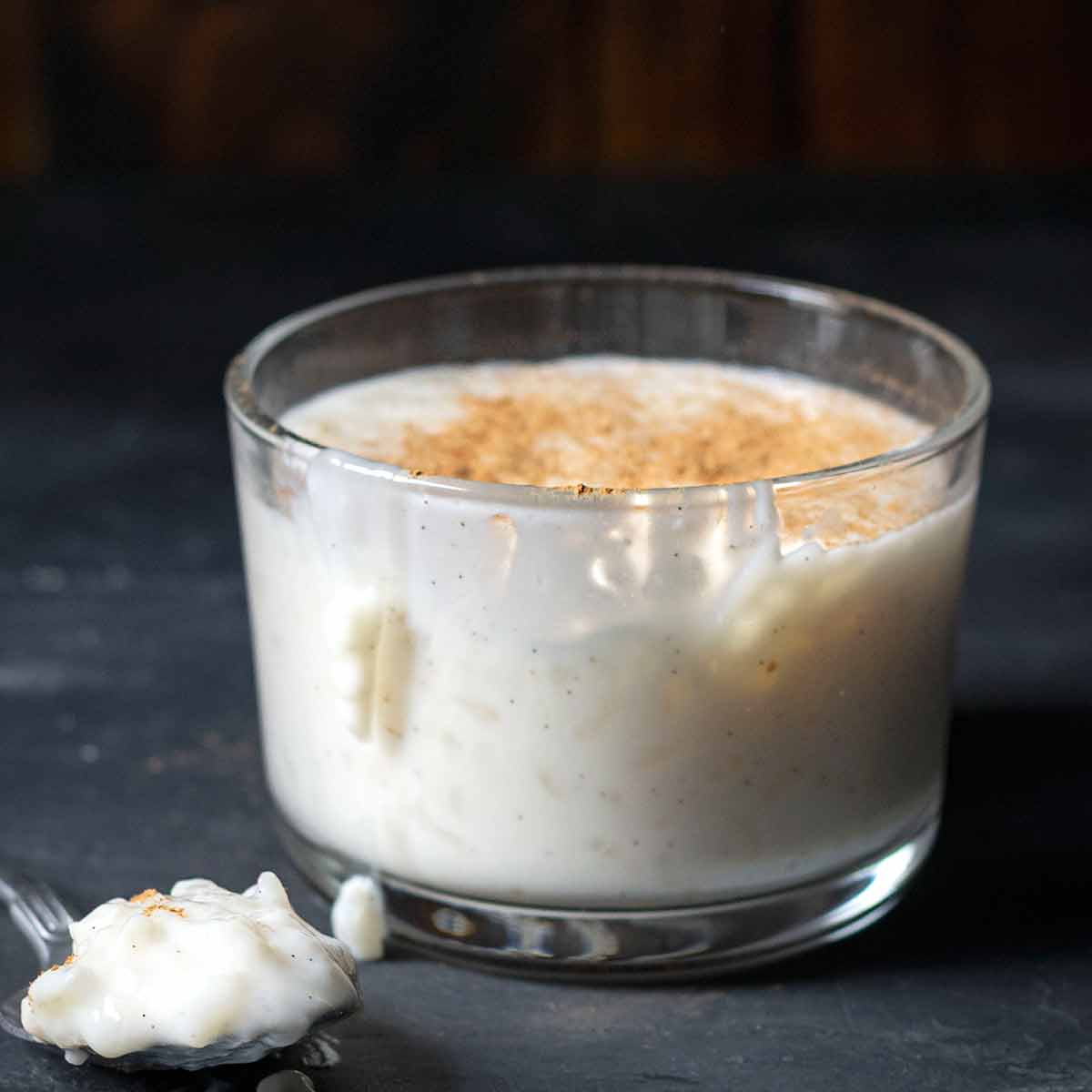
This Greek rice pudding can be enjoyed warm or chilled from the fridge. It has a cozy and warm flavor and is always served sprinkled with ground cinnamon.
The difference with other rice puddings is that it doesn't contain eggs or raisins. This is a perfect gluten-free dessrt and many people prefer it because it is easy to make, with simple ingredients, and it tastes heavenly.
8. Loukoumades
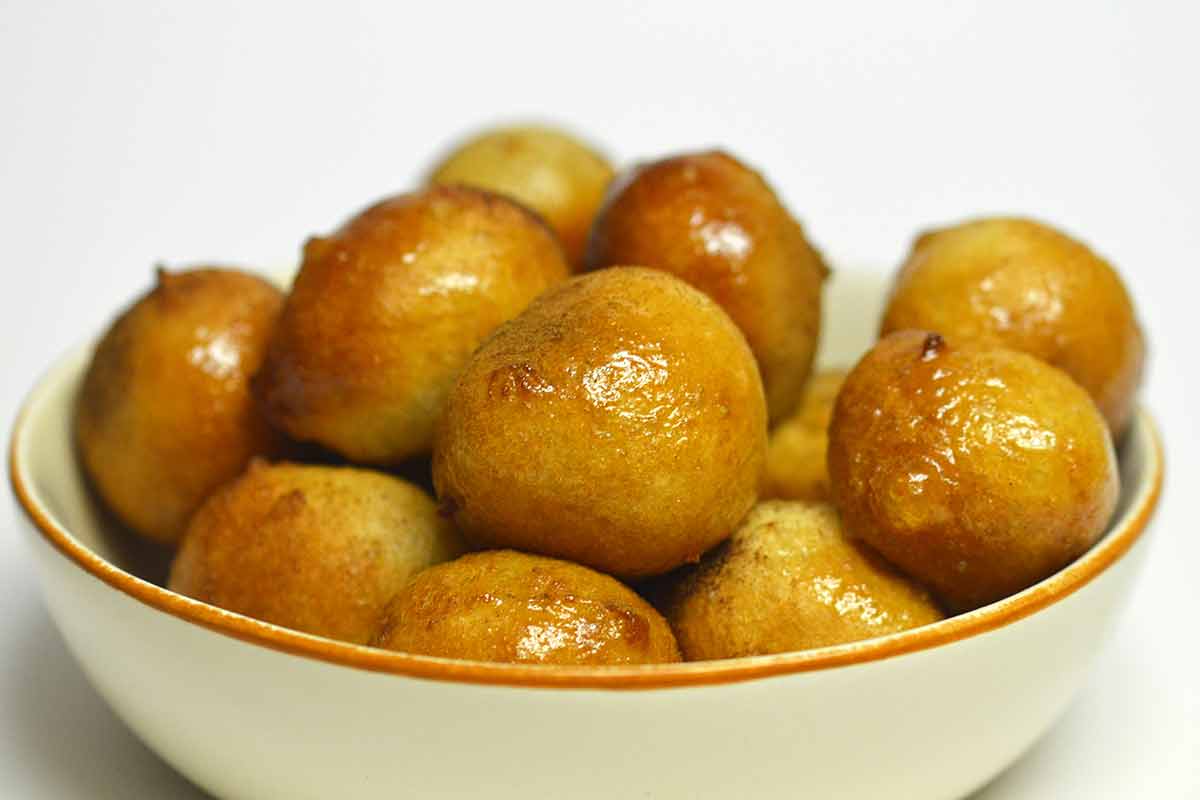
Loukoumades is probably the oldest recorded Greek dessert, with the Greek-Sicilian poet Archestratus describing deep fried donuts soaked in honey syrup in the 4th century BCE.
Also known as honey puffs, honey donuts or Greek doughnuts they are the biggest attraction in every Greek fair, where you will find a Loukoumades stand in almost every corner.
Traditionally they're served with honey, cinnamon and chopped nuts but you can also serve them with chocolate sauce.
They're texture should be light as a cloud and not heavy at all, and making them takes some practice because the dough is very wet and sticky. However, once you master them you'll be making them very often.
9. Diples
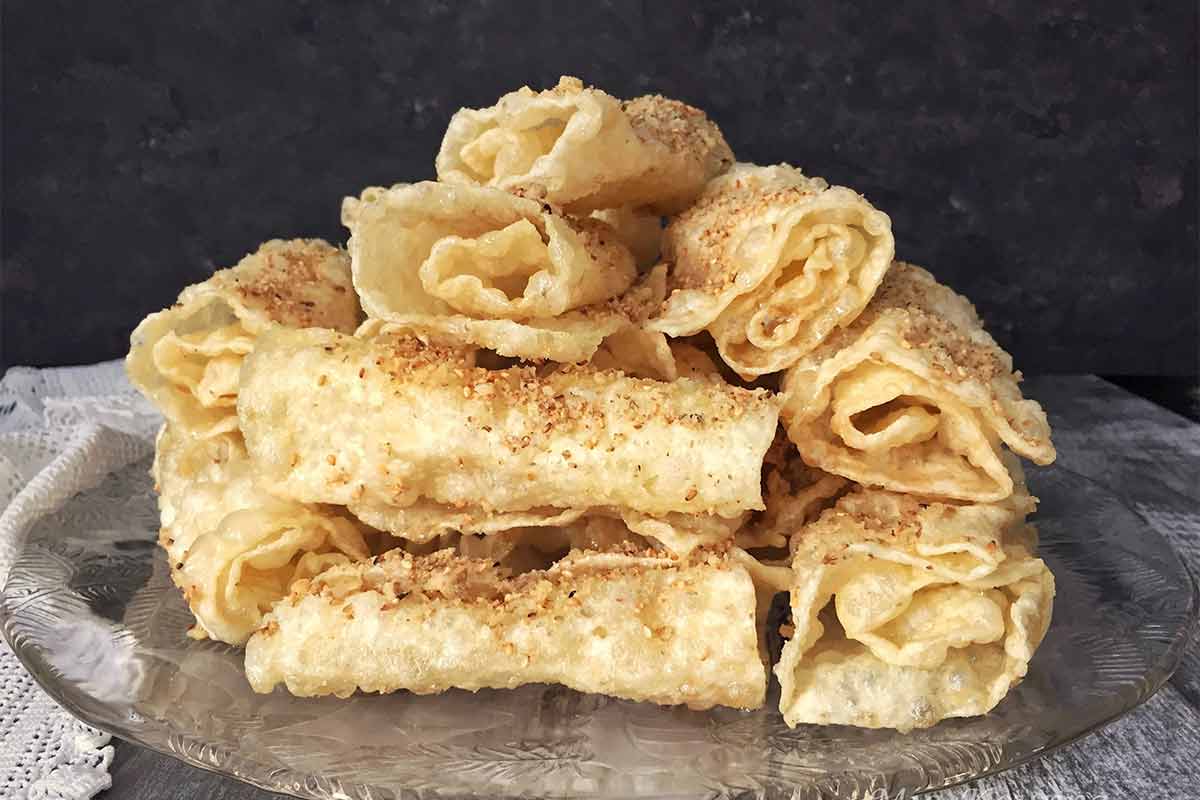
Diples is another type of fried dough dipped in honey and served with walnuts. They're sweet and crunchy and utterly delicious! The best diples have many bubbles on their surface, an indication of crispiness and proper frying.
Depending on the region, they can have various shapes or names. For example, in Crete they're called "kserotigana".
Diples are usually made during Christmas and they are also offered at weddings as a sweet treat.
10. Trigona Panoramatos
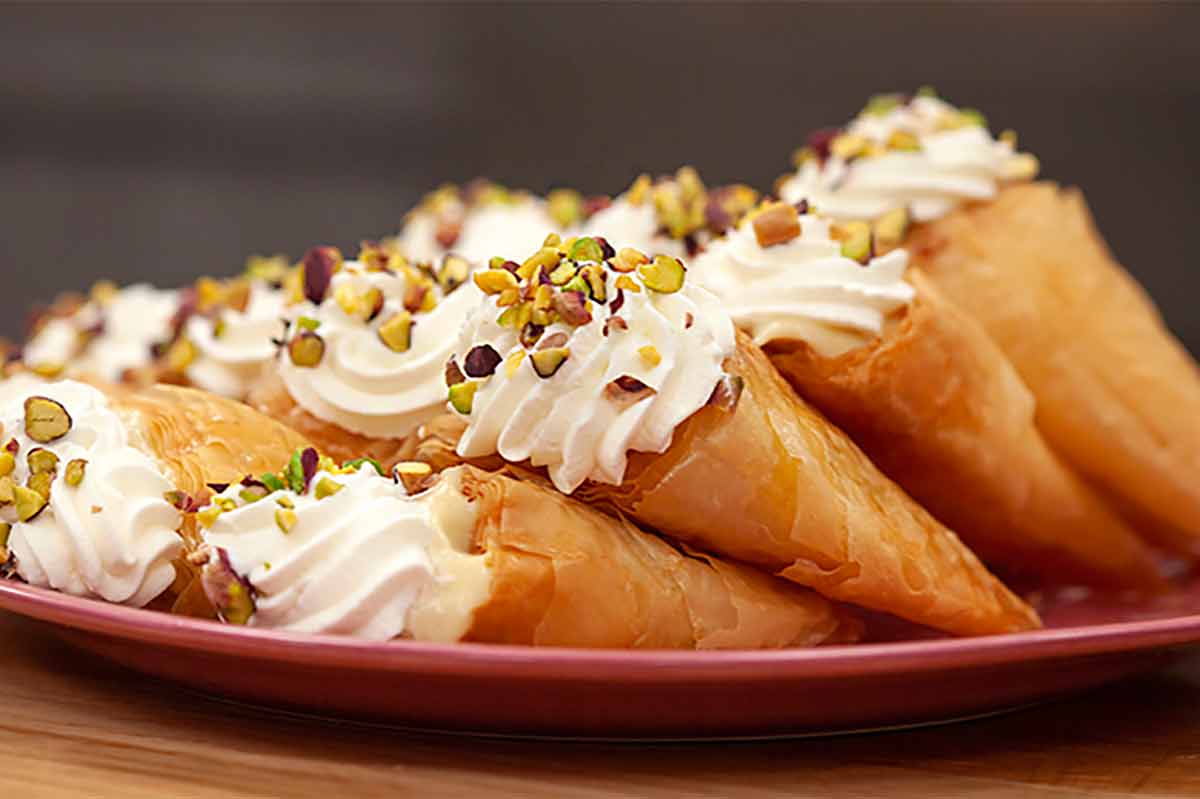
Every time I visit Thessaloniki, I never forget to buy some trigona Panoramatos.
These Greek cream-filled phyllo cones have a crispy, golden, buttery phyllo in a triangle shape which is first soaked in syrup and then filled with a rich and creamy vanilla custard.
The only time consuming thing about them is making the triangles with the phyllo dough, but once you get the hang of it, everything else will be fairly easy.
11. Coffee Ice Cream Frappe (Frappuccino)
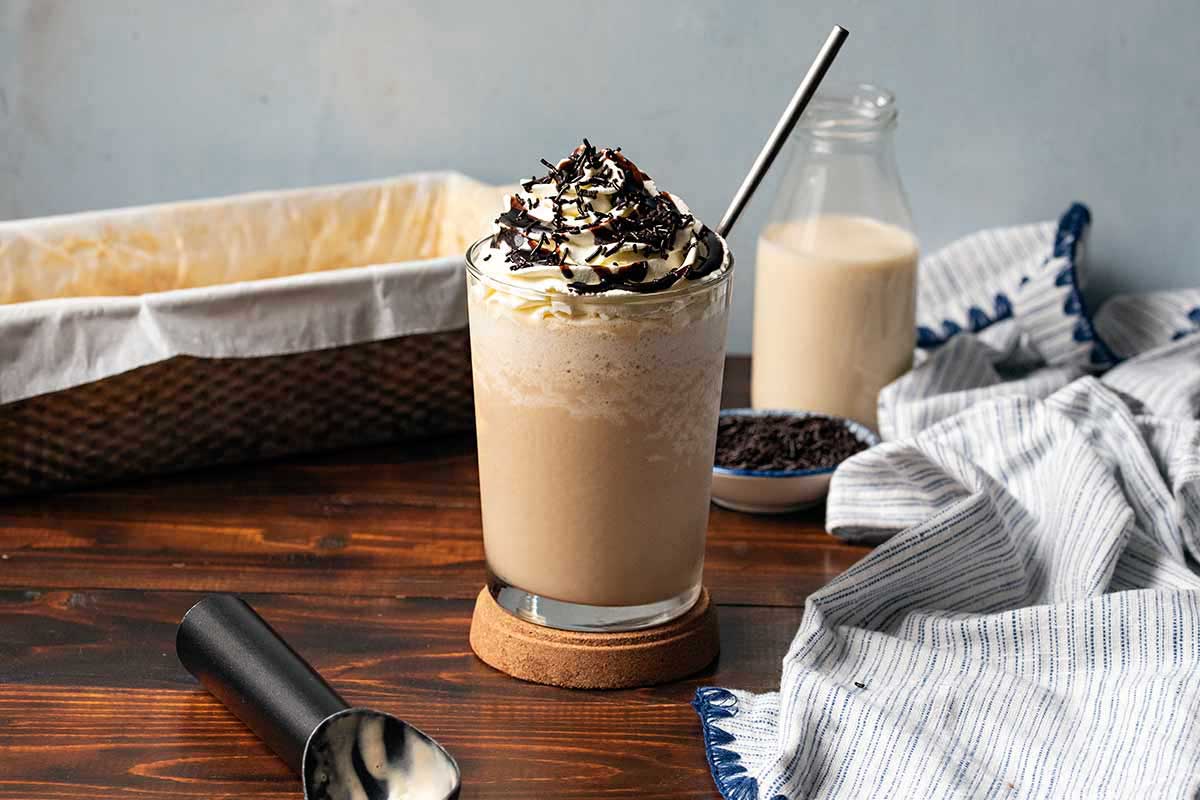
This coffee ice cream frappe recipe is one of my favorite summer desserts!
It's not summer in Greece unless you drink your first freddo espresso (though some fellas drink it all year long).
A favorite habit of many Greeks is to add 1-2 scoops of ice cream into their freddo, making it a Frappuccino. Another alternative is to blend everything until you get a creamy mixture and top it with some whipped cream and chocolate syrup.
12. Koulourakia
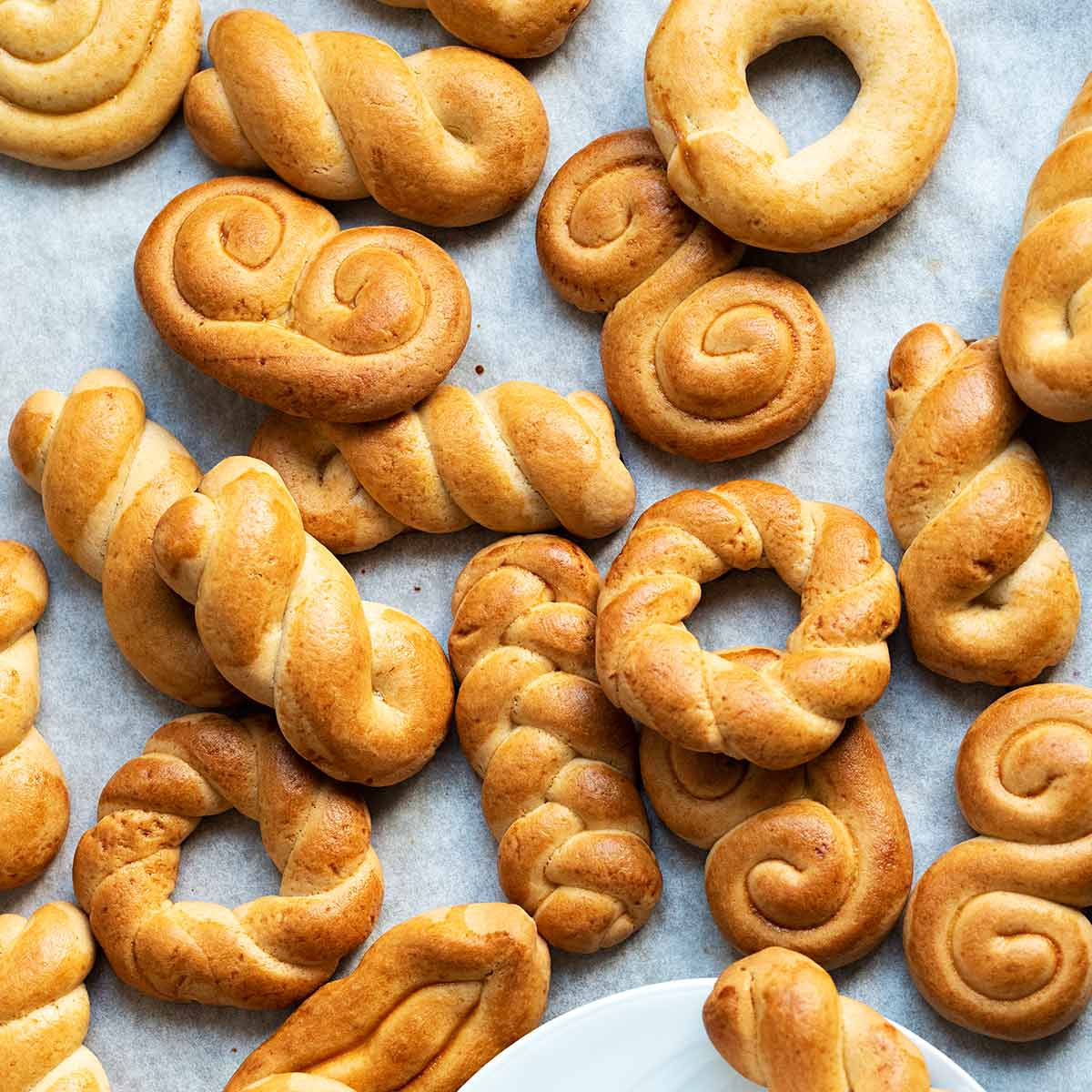
There are many types of koulourakia (cookies) in Greece. The most known are the Greek Easter koulourakia made with butter. Their name comes from the word circle (koulouri) because many of them were made in the shape of small rings.
These Cretan sesame olive oil cookies (koulourakia ladiou) is my grandma's recipe and she used to joke that she could fill a whole truck with all the koulourakia she had made over the years for her grandchildren.
Have them for breakfast with a glass of milk or dip them in your afternoon coffee. They're delicious and they also keep well for a lot of days!
13. Ekmek

Ekmek Kataifi is a luscious, Greek dessert with kataifi dough drenched in syrup that's topped with custard and then whipped cream! Kataifi dough is basically thin strings of dough made with a mixture of flour, cornstarch, salt, oil, and water.
You can find Ekmek kadaifi in a lot of old pastry shops (many of them sell it as their signature dish) and it's also easy enough for a home cook to make it.
Tip: Take the Kataifi dough out of the packaging and use a fork to separate the strings and fluff it up. In Greek this procedure is called "combing" because it's like combing your hair. The more you comb it, the more crunchy it will when it's baked.
14. Olive Oil Cake
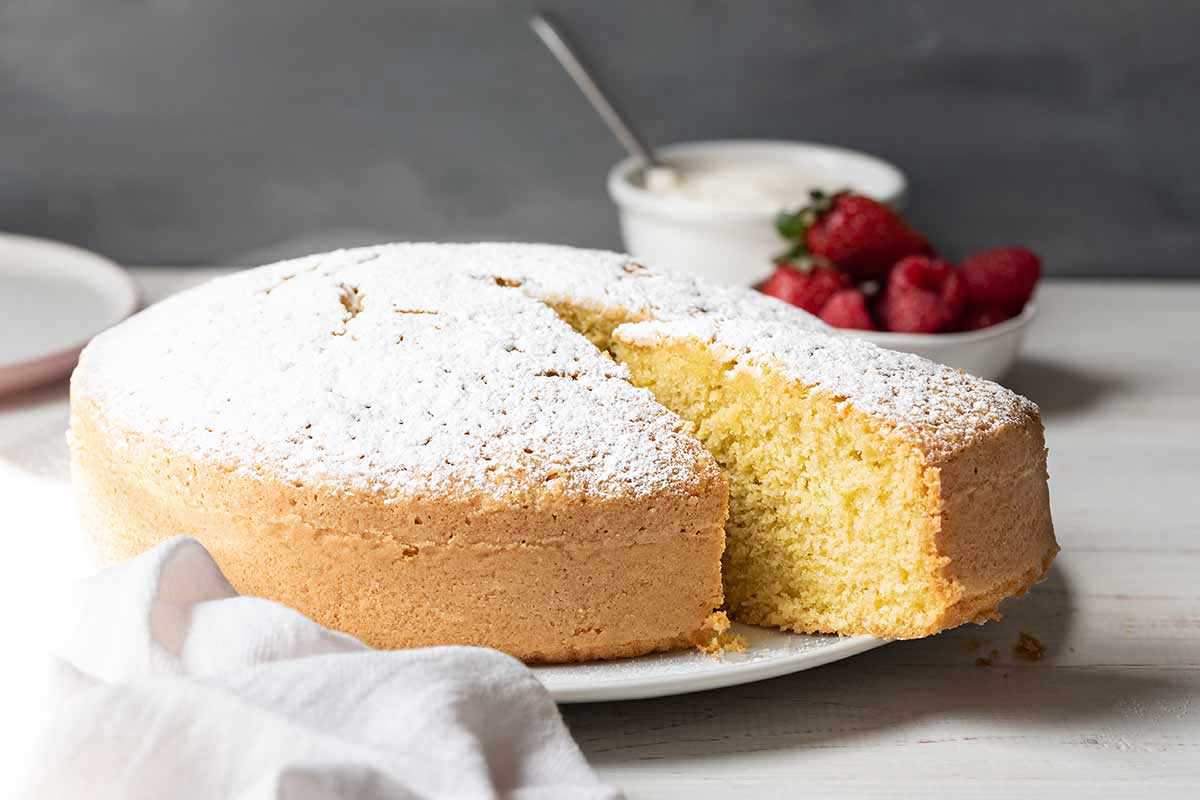
Olive oil cake is the everyday cake of every Greek household. I actually tell my mom not to make it so often, because we're trying to make my dad lose some weight! At least, more recently she started making it with whole wheat flour.
Traditionally, olive oil cake is flavored with orange or lemon zest which pairs perfectly with the taste of olive oil. I don't suggest using vanilla only, because vanilla flavor is very delicate and it will be overpowered by the olive oil.
Serve it with a dollop of honey sweetened yogurt and fresh fruit for a complete dessert!
15. Halva (Greek Semolina Pudding)
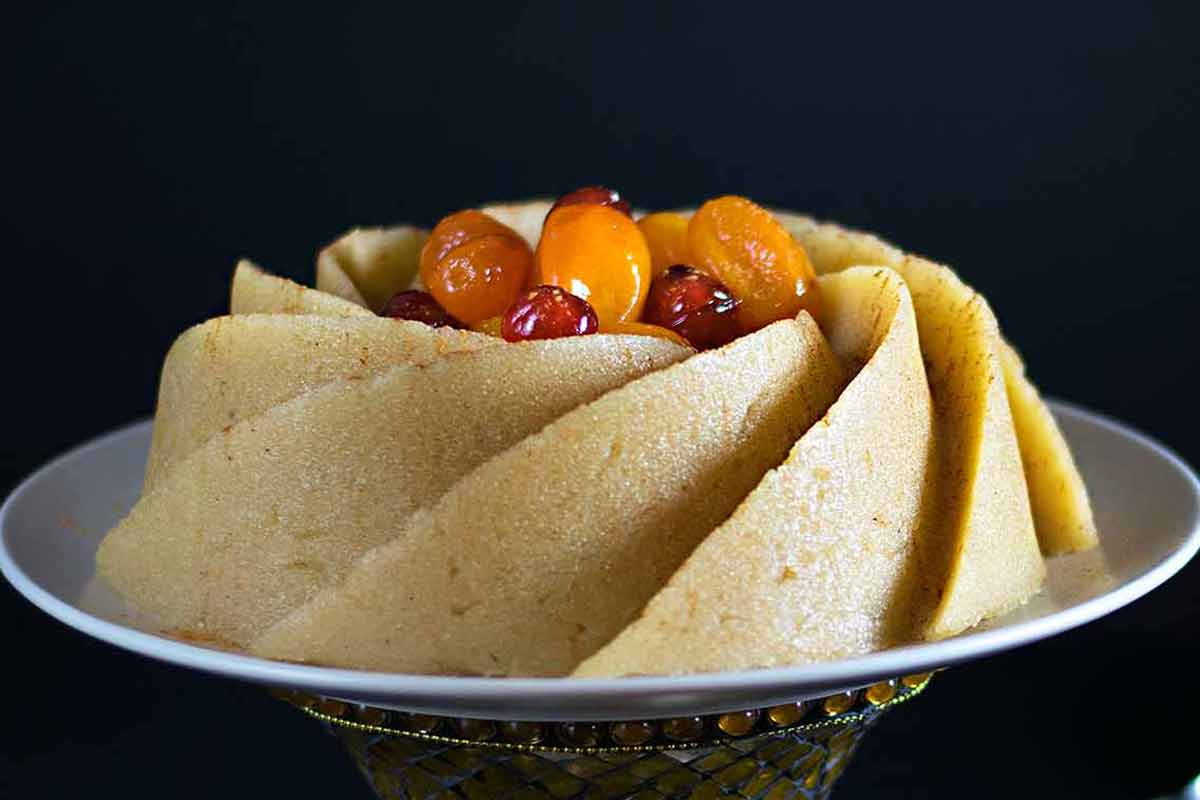
There are three types of halva in Greece. With semolina (Simigdalenios), with tahini (Makedonikos Halvas) and with cornstarch (Halvas Farsalon).
Semolina halva is the dessert everyone makes during Lent, and it's basically a type of semolina pudding. You can use whatever type of mold to shape it, because once it's chilled it unmolds very easily.
The secret for the best Halva is to toast the semolina with the olive oil in order to give it a deep, nutty flavor.
16. Greek Yogurt with Honey
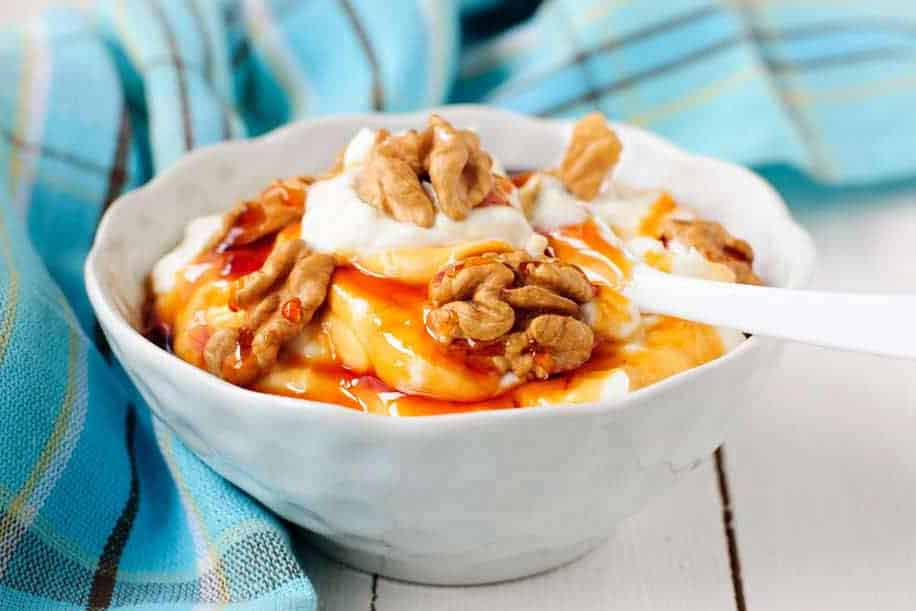
One of the healthiest and more known Greek desserts is the simple Greek yogurt with honey and walnuts. Eat this every time you need something sweet but also healthy. And yes, you can add some fresh fruit too if you like or even spoon sweets.
Fun fact: Honey and walnuts (without yogurt) is traditionally offered to Greek newlyweds for future prosperity and health.
17. Vasilopita

Vasilopita is the most popular cake in Greece, simply because literally every home makes it for the night of New Year's Eve.
This cake has a hidden coin inside and whoever finds it is supposed to be very lucky during the coming year. It's usually flavored with nuts, cinnamon and orange zest, and always covered with icing sugar.
18. Fanouropita

Fanouropita is a vegan cake made on St. Fanourios day or whenever you want to find something that you've misplaced.
Made with oil, orange juice and spices, it's a very moist, tender and delicious cake!
Fun fact: The tradition dictates that you use only 7 or 9 ingredients to make it.
19. Kataifi
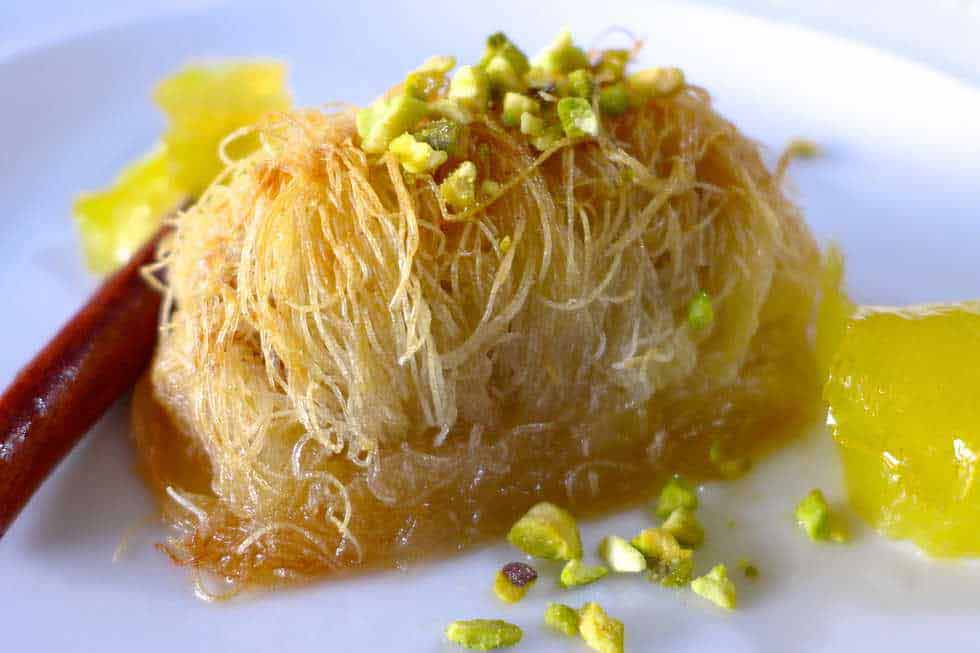
The ingredients for kataifi are similar to baklava with the difference that instead of phyllo dough, it is made with kataifi dough (a.k.a. kadayif pastry).
Kataifi is made by transferring a mixture of ground nuts onto the kataifi pastry, and then rolling it into rolls. The rolls are baked with butter in order to become crunchy and then are drizzled with a thick sugar syrup. Instead of rolls it can also be shaped into kataifi nests and many times you'll see it served with ice cream.
20. Tiganites

Greek tiganites (τηγανήτες) are the equivalent of American pancakes. There are written ancient documents describing these Greek honey fritters, so it's safe to say that they're one of the oldest Greek desserts.
These classic confections taste like loukoumades and are ready in no-time. All you need are a few basic ingredients and you can make them anytime of the day.
Tiganites are usually served with honey or grape syrup (petimezi) with added cinnamon and sometimes walnuts.
21. Galatopita (Milk Pie)

Galatopita (also called galopita in some regions) is a traditional Greek custard pie that is particularly popular in the Peloponnese region of Greece. It's made especially during Easter, and you can find recipes made with phyllo and others without.
Its name comes from the words "gala" which means milk and "pita" which means pie or cake.
22. Milopita (Greek Apple Pie)

This milopita will make your kitchen smell like an artisanal bakery.
I learned this recipe from my mom and all I have to say is that it's one of the easiest dessert recipes!
Using the same dough for both the pie crust and the crumble topping makes it quick and easy, plus the grated apples add a unique twist creating a jammy, melt-in-your-mouth filling everyone loves.
Serve it with a scoop of vanilla ice cream and you'll have the perfect dessert.
In Greece, sometimes one of the apples is replaced with 1 quince. Definitely try it when you get the chance!
23. Portokalopita (Orange Cake)
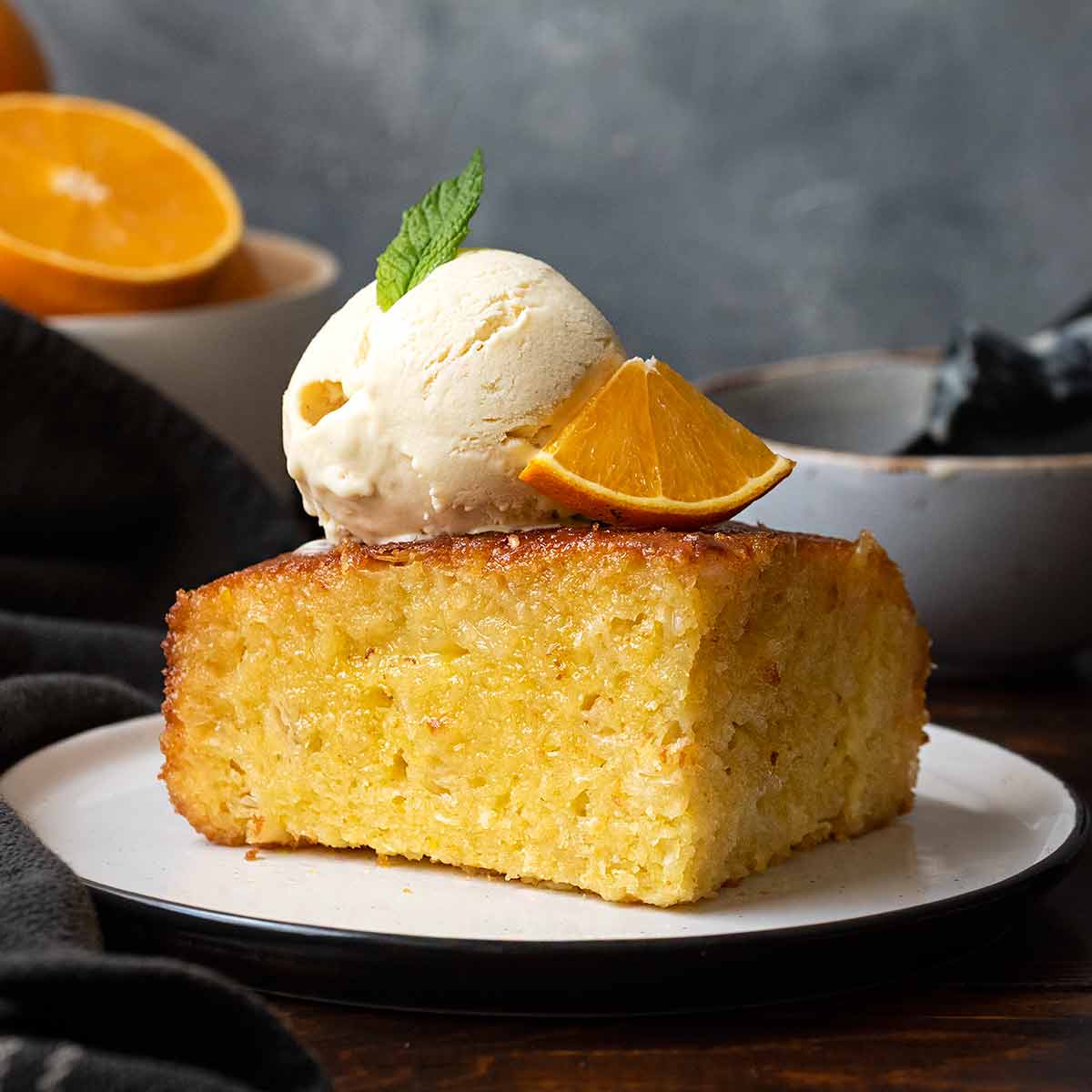
Portokalopita comes form the words "portokali" which means orange and "pita" which means cake. It is a Greek orange cake made with shredded phyllo dough. It is especially popular during the summer when you serve it with a scoop of ice cream. It’s crispy, syrupy, orange-y, and finger-licking good.
If you love orange flavored desserts and you haven't tasted this Greek cake yet, you need to give it a try asap!
24. Karidopita (Greek Walnut Cake)
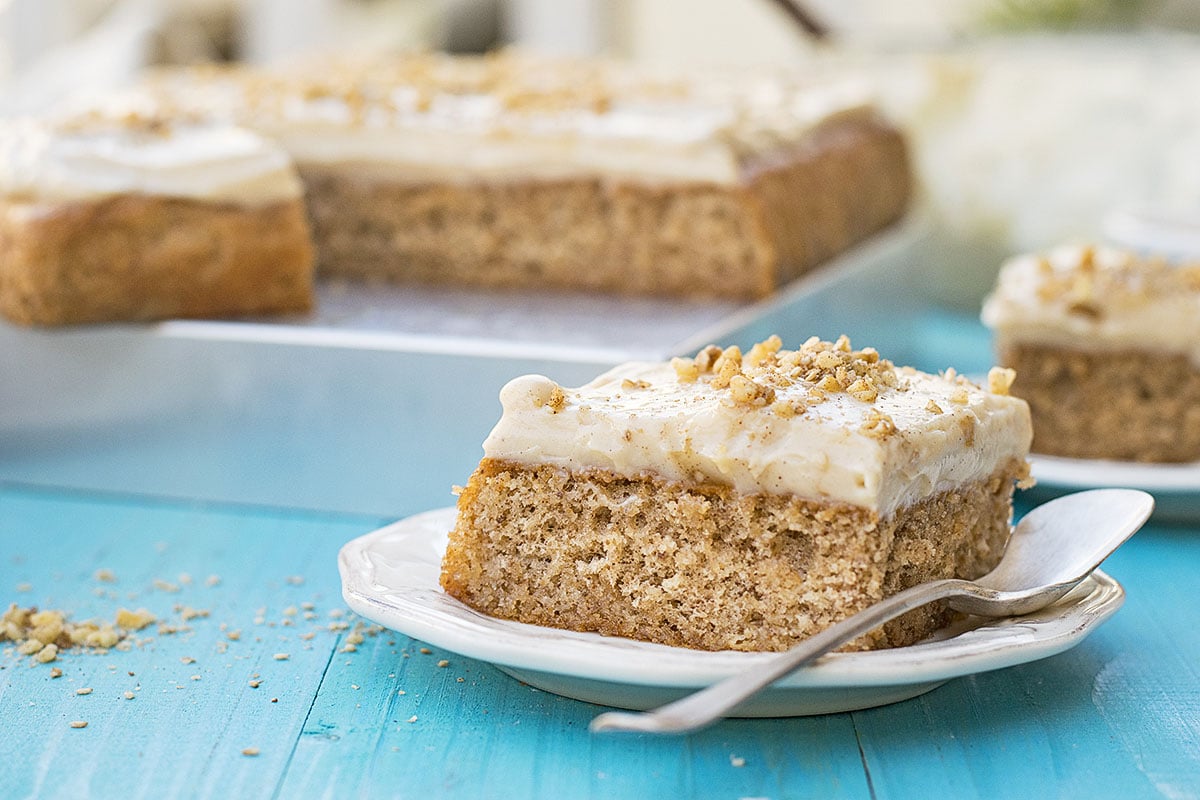
Karidopita comes from the words “karydi” which means walnut and “pita” which means cake. It is so airy and fluffy that you can actually eat 3-4 slices without even realizing it.
The base is just like a sponge cake but with the addition of ground walnuts. Once baked, it is soaked with a sugar syrup scented with spices and then covered with a smooth vanilla custard cream.
25. Revani
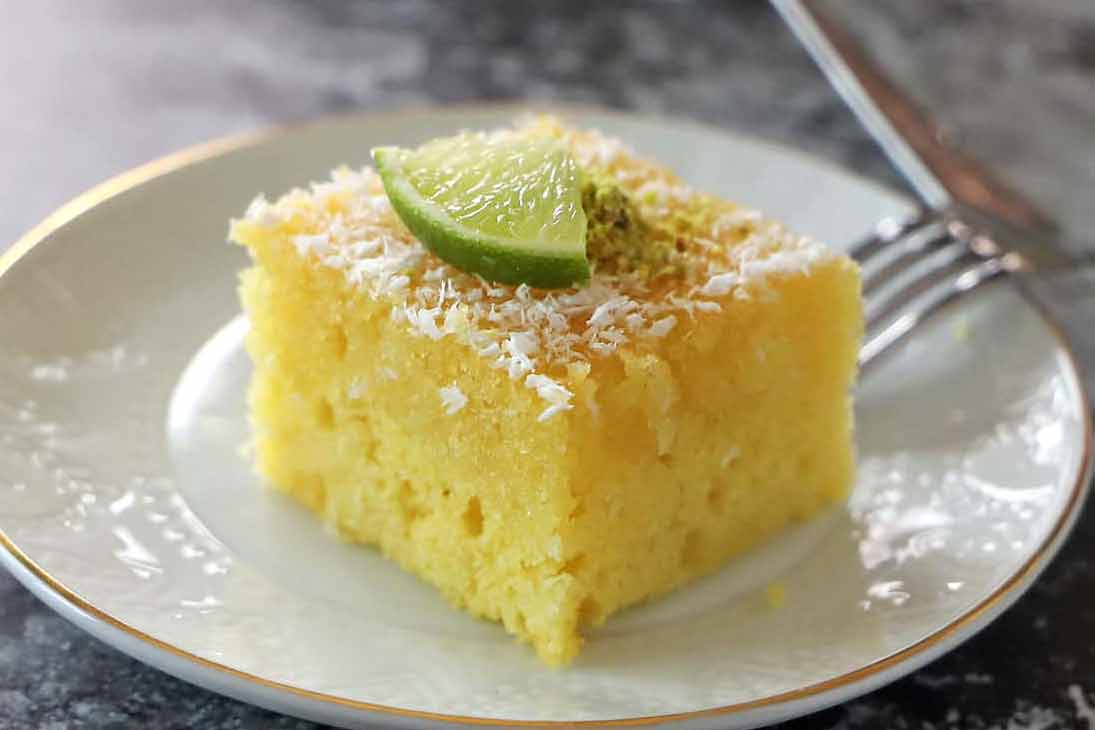
Revani cake is a classic delightful semolina cake found in the Mediterranean and Middle Eastern region. It is soaked in light simple syrup which can be infused however you want.
Revani cake is widely available in Greek, Turkey, Egypt, and many other countries in the region.
There's also a more modern variation of this dessert made with desiccated coconut.
26. Moustokouloura
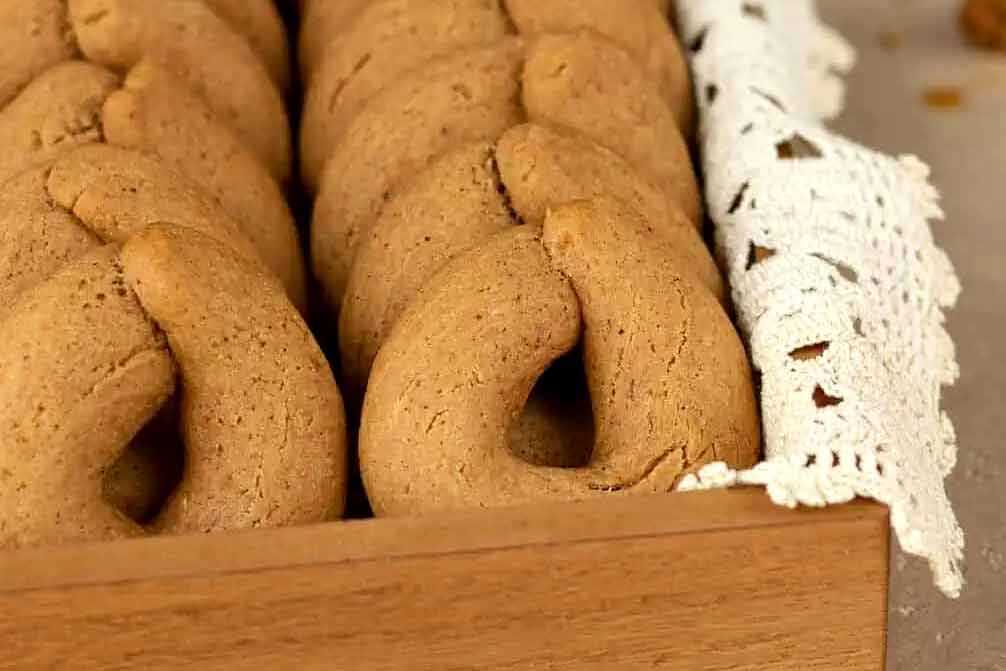
Moustokouloura are one of the most fragrant, vegan soft cookies you will ever try!
Their name comes form the words "moustos" which means "grape must" and the word "koulouri" which means cookie.
These Greek grape molasses cookies make a great healthy breakfast or snack.
*Grape molasses is a naturally sweetened syrup made from reduced grape must.
27. Koliva

Traditionally, koliva or kollyva are offered to people after memorial ceremonies in the memory of the deceased. They're also made for certain Orthodox holidays and brought to church.
This type of dessert deserves a place in this list simply because it is one of the most delicious things you're ever going to eat. It's uniquely tasty, with contrasting textures and full of nutrients. A second reason is that Koliva are a part of Greek tradition probably more than any other dessert.
28. Pasteli (Honey-Sesame Bars)
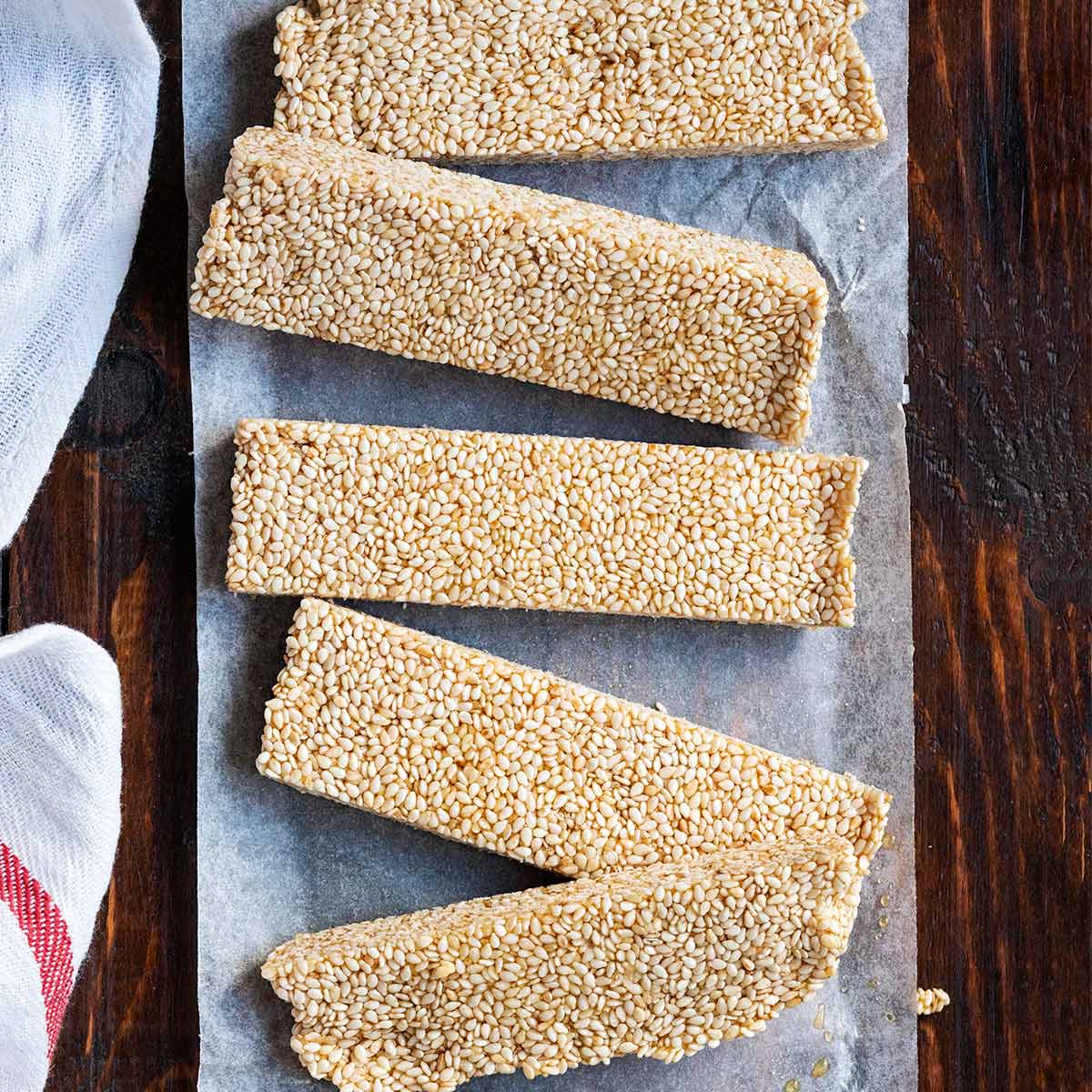
These Greek honey sesame bars known as pasteli in Greek are the original power bars.
Ancient Greeks had a similar recipe that included a mixture of nuts and honey. Pasteli is sold in every store and super market in Greece, and it's one of the most healthy and filling snacks you can find. It is basically honey and sesame seeds.
There are also other types of pasteli made with other nuts such as pistachios, almonds or peanuts.
29. Loukoumi Filled Cookies
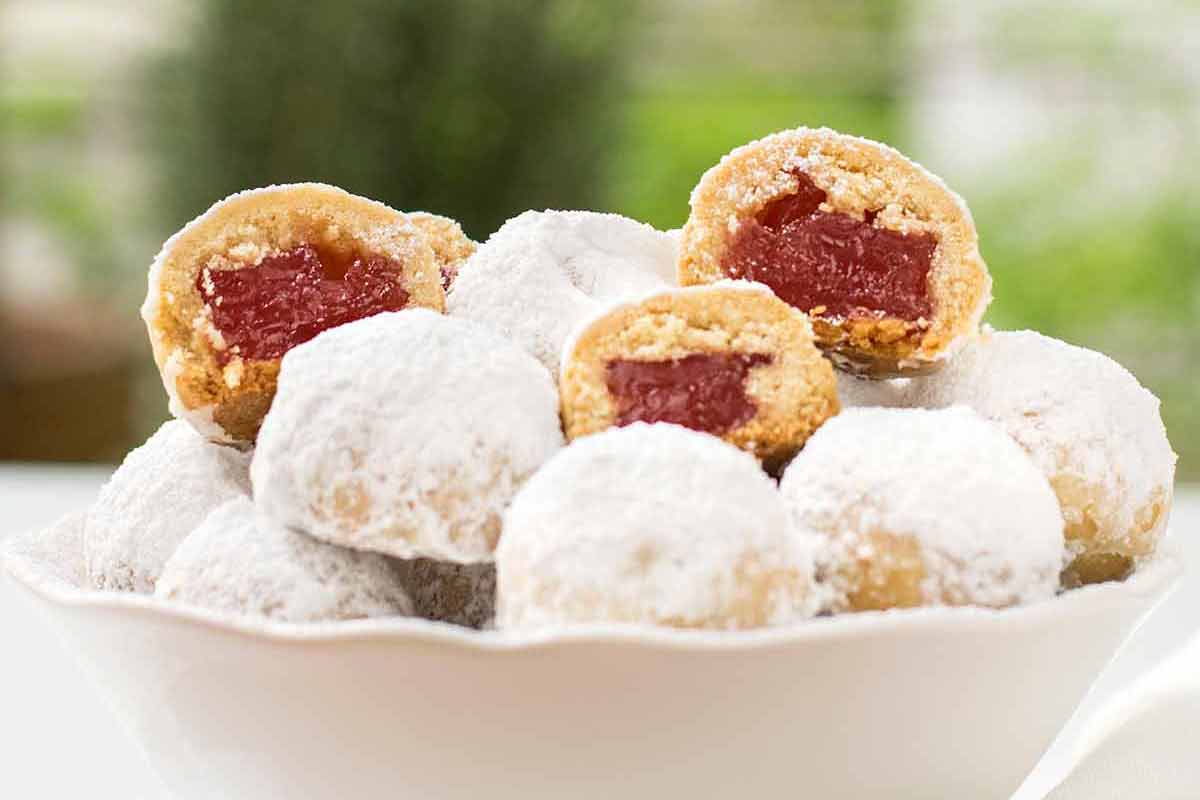
Loukoumi (or Turkish delights) are confections based on a gel of starch and sugar. Some may be plain while others are mixed with nuts such as pistachios, almonds and walnuts.
The most common flavors are rose, mastic, bergamot and lemon.
Traditionally, loukoumia (plural) are offered to guests with a cup of Greek coffee. Because the best loukoumia are the store-bought kind nearly no one in Greece makes them at home.
But they do make these vegan loukoumi filled cookies which are crunchy on the outside and soft and gooey on the inside. Except from being delicious, they're also pretty easy, so remember to make them the next time you're gifted a box of turkish delights!
30. Sokolatopita

Chocolate arrived in Greece by the mid-19th century for the first time, meaning that chocolate is only part of the more recent Greek cuisine history.
The most famous chocolate dessert in Greece is Sokolatopita which is a Greek chocolate sheet cake drenched in syrup. It's every chocoholics dream and it can fix everything bad in the world.
FAQ
Most ancient Greek sweets were based on nuts and syrups made from fruit, like petimezi (grape syrup) or pomegranate molasses. Pasteli (honey-sesame bars), caramelized almonds and other nuts were also very popular, as well as a pudding made with flour and concentrated grape juice (moustalevria).
Sugar, which is the main ingredient of many modern desserts, began to be used from the time of Alexander the Great, but it was always expensive and so was honey that was not accessible to many people.
Fruits (fresh or dried) and nuts were typically eaten as dessert. In the early third century A.D., the historian Athenaeus describes a dessert made of figs and broad beans in his written work, Deipnosophistae.
This is part of Greek hospitality!
In many restaurants and taverns, you'll be offered a free, small dessert after dinner, as a thank you gesture for choosing the certain place to dine.



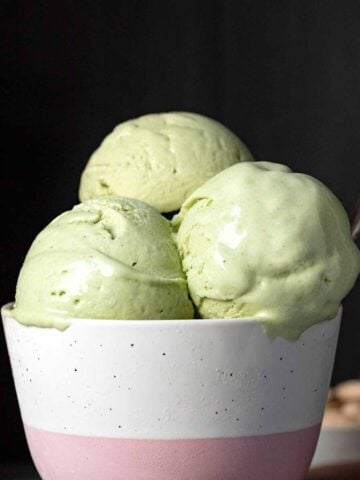


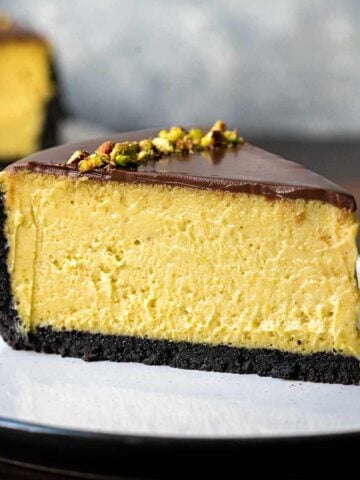
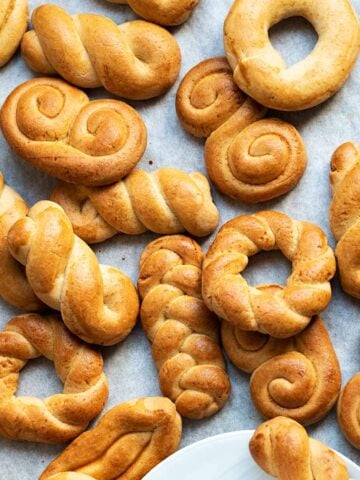
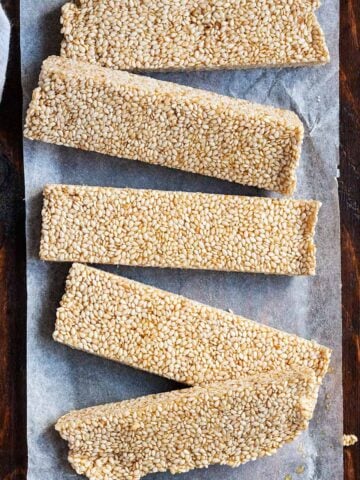
Leave a Reply